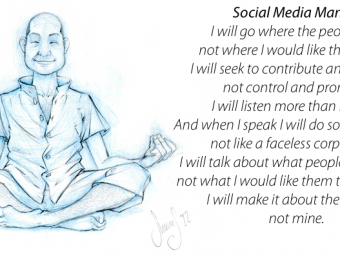Its official: Social Applications Dominate Internet
DOING WHAT COMES NATURALLY - THE INTERNET GETS A SOCIAL LIFE To those of you who follow such things it may be no surprise that Morgan Stanl...
29 Apr 2008 2765 ViewsDOING WHAT COMES NATURALLY – THE INTERNET GETS A SOCIAL LIFE
To those of you who follow such things it may be no surprise that Morgan Stanley’s Internet Trends report from March firmly establishes social media in the internet firmament. Thanks to TechCrunch for the slides. A few highlights:
Consumers are king
Consumer IP traffic surpassed business traffic in 2008 for the first time in history and is expected to widen its dominance in the years to come. The two most important sources of information for people today are the internet and personal sources. These two are each greater than television, radio or newspapers. A combination which may explain (or be caused by) the swift rise of social media.
The rise of social media
16% of all online time is spent in social applications. That’s twice as much as shopping and travel sites which account for 8% of online time. Entertainment and leisure came in at 14% while work, business and education registered 6%. The only segment larger was communications at 22% (35% were other). Six out of the top 10 internet sites are now social: youtube, myspace, facebook, hi5, wikipedia and orkut. With the exception of myspace, none of these sites were in the top 10 in 2005.
Youtube reaches new highs
You tube has 258 million users with Y/Y growth of 94%. Half of them visit at least once a week. As of 2008, Youtube has more daily page views than either Yahoo or Google.
Facebook grows up
Facebook has 101 million users with 305% Y/Y growth. More than half of all Facebook users log in once a day. The fastest growing demographic in facebook are adults aged 25+. Today the majority of networks are outside of college. As of 2008, Facebook has more daily page views than either Yahoo or Google.
Email going the way of the fax
It seems old timers (age 44+) still rely on email to communicate but younger users (15-24) prefer communicating through their social networks.
Phones evolving into hand-held mini-computers.
As of 2006, almost half of the handsets shipped were internet ready. As of 2007 311 million 3G subscribers have broadband-like service in their handsets. US is the clear follower here. 88% of mobile subscribers and 87% of mobile data subscribers are non-US (China is #1 in both).
Like this post? You'll find more marketing insights in my new book: International Brand Strategy: A guide to achieving global brand growth, now available from booksellers globally. Order your copy here.
Speaker, consultant & founder of Duffy Agency, the flipped digital agency that provides accelerated growth to aspiring international brands.






